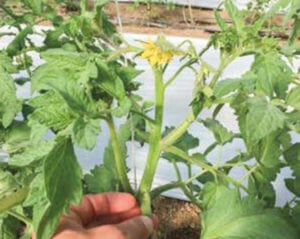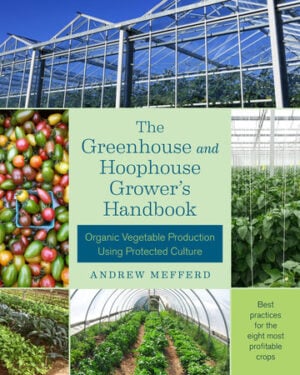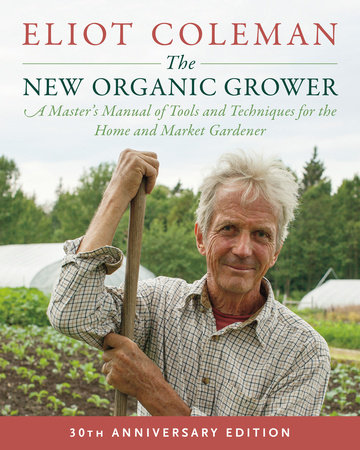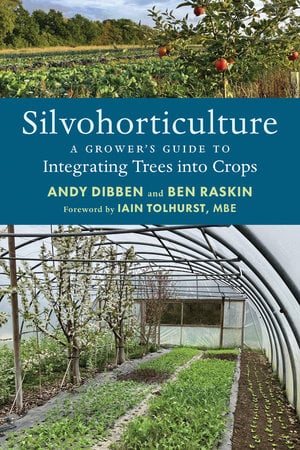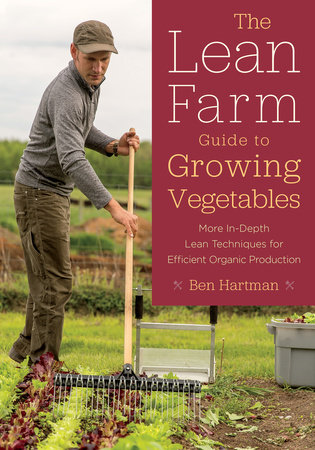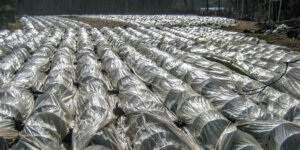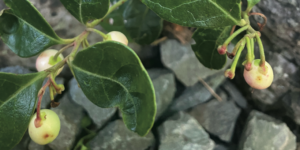Types of Tomatoes: Deciphering the Many Varieties
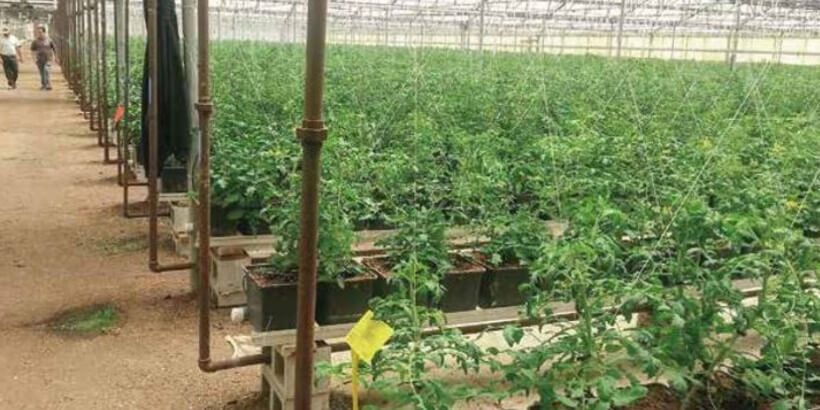
If you love tomatoes, you probably already know just how many varieties of these delicious summertime staples there are. But do you know what makes each one unique? Or how to cultivate them depending on your growing environment? No? Well then sit back and enjoy the read!
The following is an excerpt from The Greenhouse and Hoophouse Grower’s Handbook by Andrew Mefford. It has been adapted for the web.
Tomato Variety Types
The huge importance of tomatoes to greenhouse vegetable growing has resulted in an amazing diversity of cultivars with specific greenhouse adaptations. There are varieties of almost any type you might want to grow available for protected growing. There are even a couple of types—the cluster tomato and truss cherry—that are specific to greenhouse culture.
Jointless varieties, for example, represent a modern innovation for cluster tomatoes. Jointless tomatoes lack the abscission layer where an individual tomato can be removed from the truss. This means that they do not fall off the cluster as easily when being handled. This trait is also sometimes used in field tomatoes so the picked tomatoes do not retain their calyxes, which can puncture other tomatoes during harvest.
Though the beefsteak was the mainstay of the greenhouse tomato industry for a long time, smaller varieties have evolved alongside demand for snacking vegetables. If you told growers twenty years ago that grape, cocktail, and cluster tomatoes would be important categories in the near future, they probably wouldn’t have believed you—if they even knew what those types were.
Keep in mind that smaller-fruited varieties will be lower yielding, more or less in proportion to their size (the smaller the fruit, the lower the yield).
Grape Tomatoes
True grape tomatoes are not just oval-shaped cherry tomatoes. Grape tomatoes have a flavor and texture profile all their own due to being firmer and having less gel and seeds than cherry tomatoes. They are also usually less prone to cracking than cherry tomatoes. Even people who do not appreciate firm tomatoes may like grape tomatoes as long as they are firm without being hard. Good grape tomatoes are one of my personal favorites for eating out of hand.
Grape tomatoes tend to have a very open, wispy-leaved plant habit that is conducive to airflow. They are usually less affected by leaf mold than other types, though leaf mold resistance can still be useful where disease pressure is high.
Cherry Tomatoes and Truss Cherries
Like grape tomatoes, protected culture cherries have open plant types, along with low fruit loads and yields when compared with larger tomatoes. They tend to be sweeter and have better flavor than the larger types.
One subtype of the cherry tomato is known as the truss cherry. Instead of harvesting individual fruits, you harvest the entire truss of tomatoes by clipping it off the plant. Truss cherries are pretty much exclusive to protected cultivation due to the difficulty of producing a perfectly ripened truss of cherry tomatoes in the field. There is usually a target number of fruit on the truss, depending on how many can be fully filled out. If there are more fruits set on the truss than the plant can fill, you may need to nip the last few fruits off the tip off the truss so every fruit is perfectly filled out. The main feature that differentiates a cherry variety developed for truss harvest from one for loose harvest is that most truss cherries are jointless.
Important traits for truss cherry tomatoes include fast ripening and good shelf life, so the first fruit to ripen is not mush by the time the last fruit is ripe. These types are usually marketed in boxes to protect the delicate truss and fruit. This variety depends a lot on presentation, since the fact that it is on the truss shows that it was greenhouse-grown.
Cocktail Tomatoes
Cocktail tomatoes occupy a size class larger than cherry tomatoes and smaller than cluster tomatoes. There are varieties for loose harvest and jointless varieties for cluster harvest. This class of tomatoes is more popular in Europe than it is in North America. My impression is that North Americans like their tomatoes big or small but not in between, and this is an in-between variety.
Nonetheless, there is some market for this type of tomato, which can have very good flavor. It was originally popularized by a single variety, Campari, which is branded and sold under that name. It is sometimes marketed as a salad tomato, one that you can make two quick cuts to and throw on a salad.
Tomatoes on the Vine
Cluster tomatoes, known in the industry as tomatoes on the vine (TOVs), were bred specifically for the greenhouse industry. They have risen to take their place as one of the main greenhouse tomato variety types, along with beefsteaks. In a crowded produce marketplace, the greenhouse tomato industry was trying to differentiate itself from all the other tomatoes on the shelf, especially field tomatoes. The big idea was that if you saw these beautiful ripe tomatoes still attached to a perfectly clean vine that might even still have a whiff of tomato plant smell, the presentation would be so impressive it would set the tomatoes apart from others in the store.
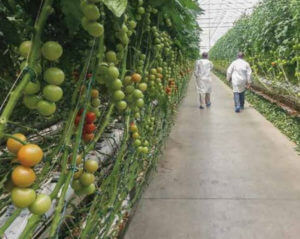 And indeed it’s very difficult to grow a perfect cluster of tomatoes in the field. The possibility of disease causing spots on a tomato, or rain causing split tomatoes, makes it much less likely that an entire cluster of tomatoes will make it out of the field in perfect condition. The other difficulty of producing cluster tomatoes in the field is getting them all to ripen close to one another. Even though TOVs are selected for fast ripening, having heat to keep the tomatoes ripening as quickly as possible is almost essential to getting the last one to ripen before the first one gets overripe.
And indeed it’s very difficult to grow a perfect cluster of tomatoes in the field. The possibility of disease causing spots on a tomato, or rain causing split tomatoes, makes it much less likely that an entire cluster of tomatoes will make it out of the field in perfect condition. The other difficulty of producing cluster tomatoes in the field is getting them all to ripen close to one another. Even though TOVs are selected for fast ripening, having heat to keep the tomatoes ripening as quickly as possible is almost essential to getting the last one to ripen before the first one gets overripe.
Unfortunately, TOVs represent yet another example of produce whose best qualities—freshness and flavor— have been bred out. Many of the most commonly grown tomatoes in the industry recently have been varieties that prioritize production over flavor.
Still, some TOV varieties are much better than others, and have the potential to be quite good. Most varieties are bred to produce a cluster of four or five medium-sized or six smaller tomatoes. The technique is to grow the entire cluster until the all the tomatoes are ripening, and the one at the end (the last one to ripen) is at least starting to show some color.
Growers with a longer supply chain may pick the cluster with the end tomato still quite green, whereas growers with a shorter supply chain may be able to let the end tomato get riper. At that point the cluster is clipped off the plant and usually placed into the cardboard flat they will be shipped in, to minimize the amount of handling.
Some of the newer TOV varieties are jointless to minimize the amount of tomatoes that fall off the cluster. Many wholesalers have very stringent standards and will only buy clusters with a certain number of tomatoes. Shelf life and “green parts” (calyx and stem) that stay green for an extended period of time are important development criteria for this type.
As someone who has visited greenhouses with Dumpsters full of tomatoes outside, I have seen firsthand that length of shelf life is not just academic. If shelf life is a concern for you, you can do one of the most basic tests of shelf life yourself. Take several varieties at the same level of maturity, place them into boxes, hold them in conditions similar to what they will be stored at, and see which ones rot faster.
Beefsteaks
Beefsteak tomatoes used to be the main greenhouse type, originally produced to compete with out-of-season field production. The limitations of growing field varieties in greenhouses quickly led to the development of dedicated greenhouse varieties.
For people who are not familiar with the produce industry, I’m sure it sounds strange to say that one of the last things considered in the development of many new tomato varieties is flavor. But when you consider how many other breeding goals there are, you can understand how this has come to be, however unfortunate it is. Beefsteak varieties are now subject to the same rigors as other tomato varieties, namely to meet the highest standards of appearance, yield, and shelf life.
One way that shelf life is increased is by breeding firmer tomatoes, to the point where some of them are pretty hard even when completely ripe. There are a lot of beautiful greenhouse beefsteak tomatoes out there. Many of them look much better than they taste. Taste new varieties to make sure they are up to your flavor and texture standards before planting a lot of them.
One way that protected culture growers seek to differentiate their produce from field beefsteaks is to harvest with the calyxes on. Since most field tomatoes are harvested loose into bins, the calyxes are removed by the pickers so the stems don’t puncture the other fruit. The fact that greenhouse tomatoes are usually harvested in a single layer straight into the flats they are shipped in means the calyxes can be left on without risk of puncturing other fruit.
If your harvest methods involve piling tomatoes, it’s possible for pickers to clip the stems off and leave the calyx as they are harvesting. Even if consumers don’t know what a calyx is, it does make for nice presentation to leave it on. Curved shears are useful for cutting the stem off flush with the top of the tomato.
Recommended Reads
Recent Articles
Want to grow year-round, but a greenhouse feels like a big investment? When it comes to cost and flexibility, low tunnels are the all-around winners.
Read MoreWintergreen is the stunning evergreen groundcover that’s a game-changer for your garden! It’s cherished for its aromatic leaves, vibrant fall color & bright berries.
Read MoreGrow winter carrots for a sweeter & more flavorful harvest! Ditch the bland, store-bought carrots this winter! Grow your own winter carrots for a sweeter and more flavorful twist 🥕🥕
Read More

